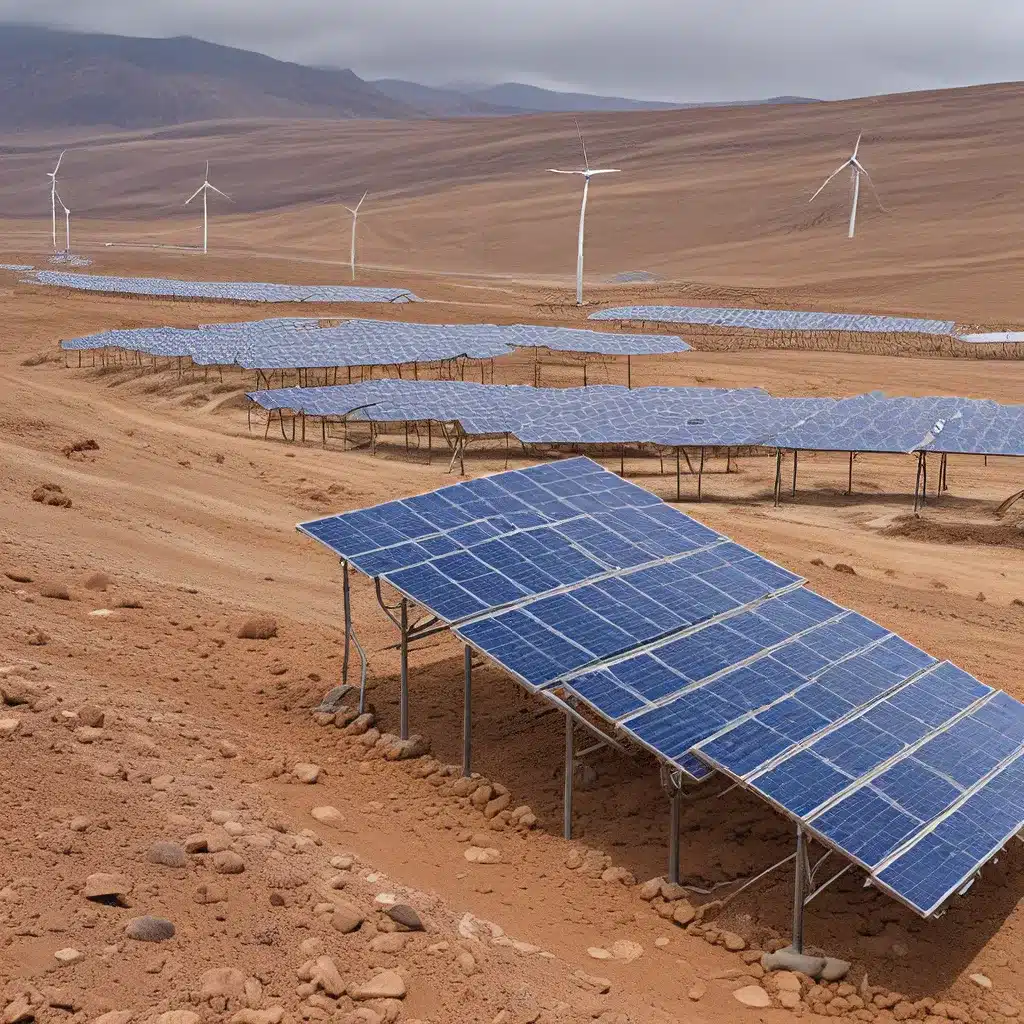
Navigating the Frontiers of Clean Power
When you think about renewable energy, images of sun-drenched solar panels and towering wind turbines likely come to mind. But what about the places where the elements are anything but cooperative? Welcome to the wild, wintry world of renewable energy in extreme environments.
I’ve had the privilege of diving headfirst into this fascinating realm, exploring how innovators are harnessing the power of nature in some of the harshest corners of our planet. From the Arctic’s frozen tundra to the scorching deserts of the Middle East, these renewable energy trailblazers are proving that no climate is too extreme to go green.
As one expert put it, “Yesterday’s Formula One tech” is now influencing “today’s commuter cars.” And the lessons we’re learning from these extreme energy adventures? Well, they just might shape the future of renewable integration for all of us.
Defying the Deep Freeze
Let’s start in the land of permafrost and bone-chilling temperatures – the Arctic Circle. Here, where the mercury can plummet below -50°C, the world’s first liquefied natural gas (LNG) project is powering ahead. The $27 billion Yamal LNG facility sits on this frozen frontier, relying on a fleet of about 20 power transformers to keep the lights on.
But how do you prevent these critical pieces of equipment from becoming solid blocks of ice? The secret lies in a clever choice of transformer fluid – synthetic ester. With a pour point of a staggering -56°C, this substance can handle the Arctic’s icy onslaught, reducing the risk of freezing and fire hazards that would plague a traditional mineral oil-filled transformer.
It’s not just the Yamal project grappling with these frosty challenges. Wind turbines in places like Canada and the North Sea face similar issues when the wind dies down and the mercury plunges. Again, ester fluids with ultra-low pour points emerge as the heroes, ensuring these renewable workhorses can start up reliably, even in the depths of winter.
Taming the Scorching Heat
But what about when the thermometer swings to the opposite extreme? Let’s head to the sizzling deserts of Kuwait, where air temperatures can easily reach 50°C or more in the summer. Here, the transformers powering the grid are running at the very limits of their capabilities, with the air they intake reaching a scorching 70°C.
In this volatile environment, a single fault that restricts liquid flow can lead to disastrous hot spots and explosive failures – a phenomenon the Kuwaitis know all too well as “popping.” But once again, synthetic ester fluids come to the rescue, with their remarkably high fire points providing a vital safety net.
Beyond fire prevention, these heat-hardy fluids also offer long-term cost savings. You see, the extreme temperatures accelerate the chemical reactions that degrade traditional mineral oils, necessitating more frequent maintenance. Ester fluids, on the other hand, can handle the heat with ease, potentially reducing auxiliary cooling equipment and lowering overall upkeep expenses.
It’s no wonder then that Kuwait has fully embraced this innovative solution, adopting ester fluids as the national standard for transformer safety and reliability.
Building for the Future
As the climate crisis marches on, experts warn that extreme weather events are only going to become more intense and frequent. Hurricanes, droughts, and flooding are all predicted to worsen, and what was once considered ‘extreme’ may soon become the new normal.
But the trailblazers I’ve encountered aren’t letting these daunting challenges hold them back. In fact, they’re using the lessons learned in the world’s most hostile environments to shape the future of renewable energy integration for all of us.
Take the researchers at the National Renewable Energy Laboratory (NREL) in Fairbanks, Alaska. They’re not just studying how buildings and renewable technologies can withstand the frigid Arctic – they’re actively developing and demonstrating cutting-edge solutions that could one day be applied everywhere.
From super-insulated building envelopes that balance efficiency and moisture management to innovative water and wastewater systems that make remote homes healthier and more resilient, these dedicated teams are pushing the boundaries of what’s possible. And by sharing their findings with industry, communities, and policymakers, they’re ensuring these breakthroughs have a far-reaching impact.
But it’s not just about surviving the elements. NREL is also tackling the challenge of integrating renewable energy into these extreme environments, exploring everything from heat pumps and solar photovoltaics to ground source heat pumps and energy storage. The goal? To create resilient, self-sustaining energy systems that can power even the most remote and inhospitable corners of our world.
A Clean, Resilient Future for All
As I’ve delved into this captivating realm of renewable energy in extreme environments, I’ve been struck by the sheer ingenuity and determination of the people behind it all. These are innovators who refuse to be daunted by the harshest of conditions, who see challenges as opportunities to push the boundaries of what’s possible.
And you know what? I think that’s a mindset we could all learn from. Because let’s be honest, the future of our planet depends on our ability to harness renewable energy – no matter where we live or what Mother Nature throws our way.
So, the next time you flip on a light switch or charge your electric vehicle, take a moment to appreciate the incredible work being done to make that possible. From the frozen tundra to the scorching desert, the champions of renewable energy integration are paving the way for a cleaner, more resilient future – and Firewinder is proud to be a part of that journey.
Who knows what other amazing innovations are just around the corner? The only way to find out is to keep exploring, keep learning, and keep powering forward, no matter how extreme the environment may be. After all, as the old saying goes, “the more you know, the more you grow.” And in the world of renewable energy, that’s a mantra we should all take to heart.

